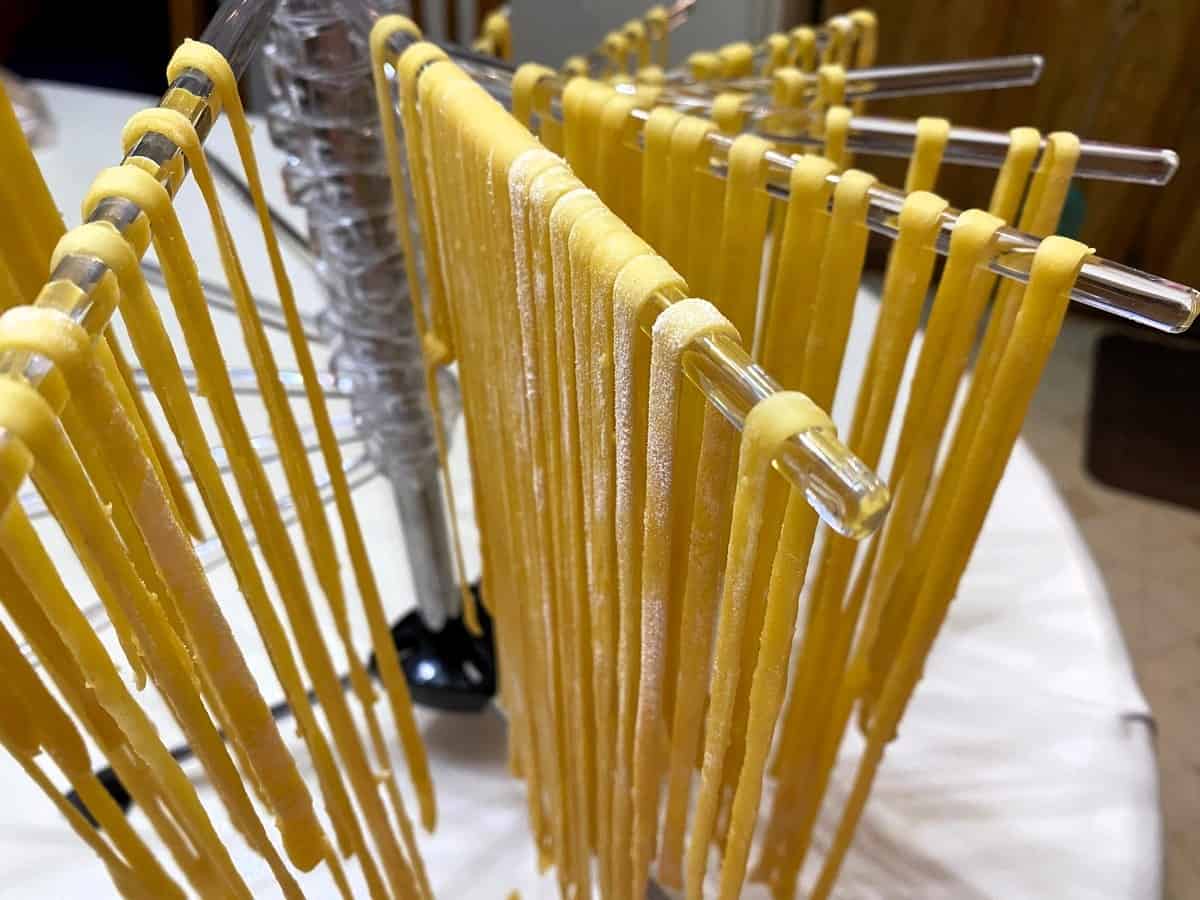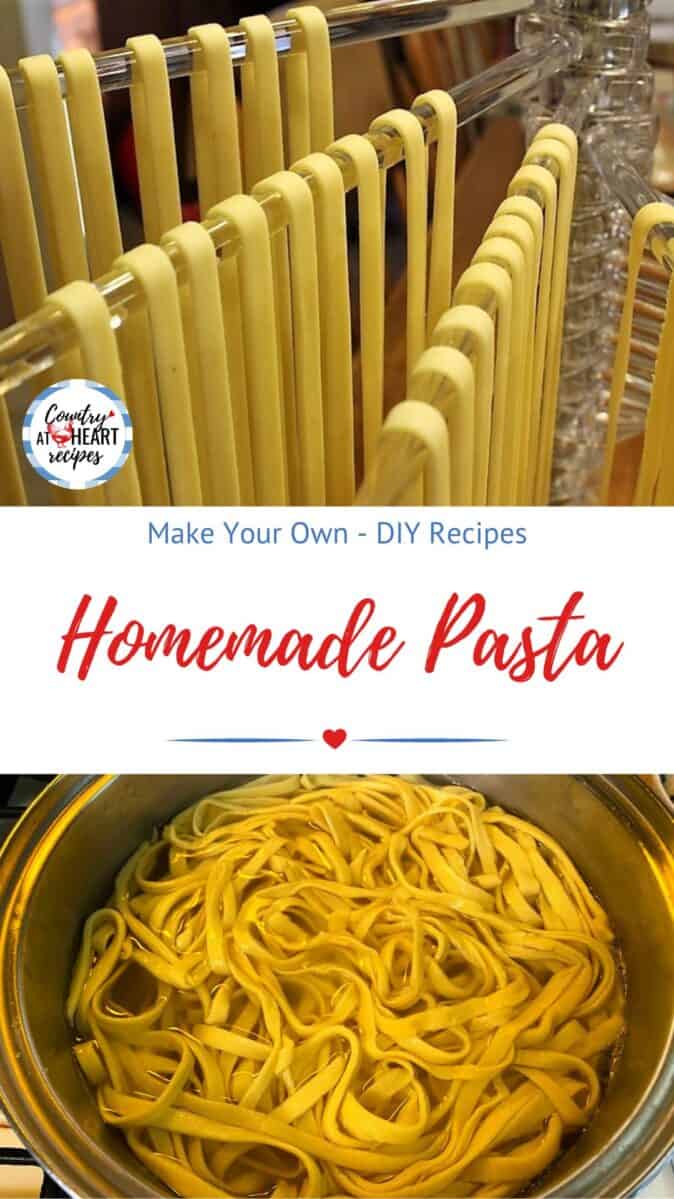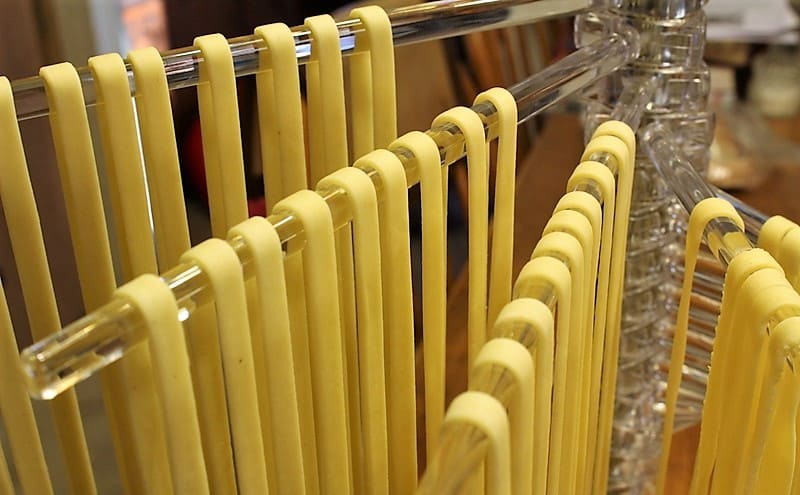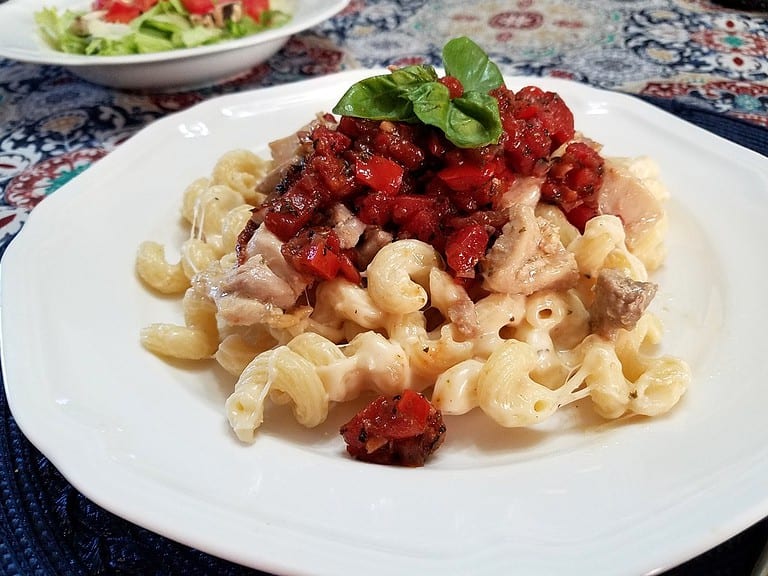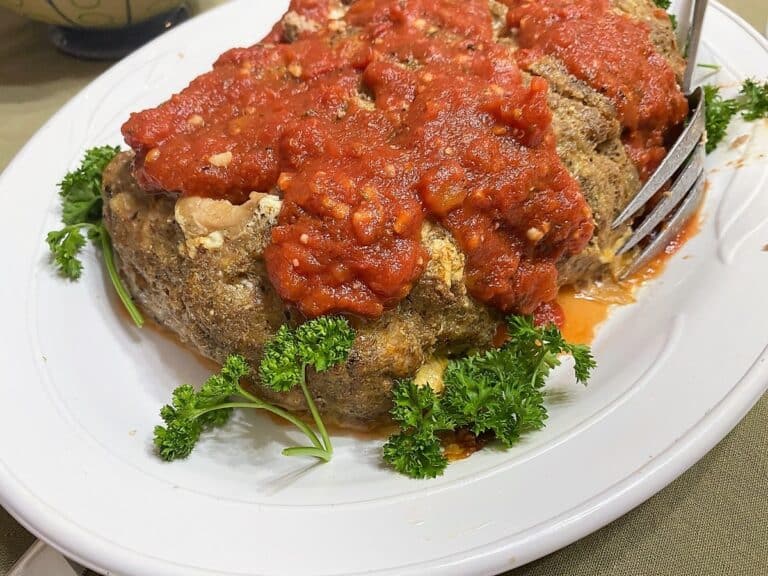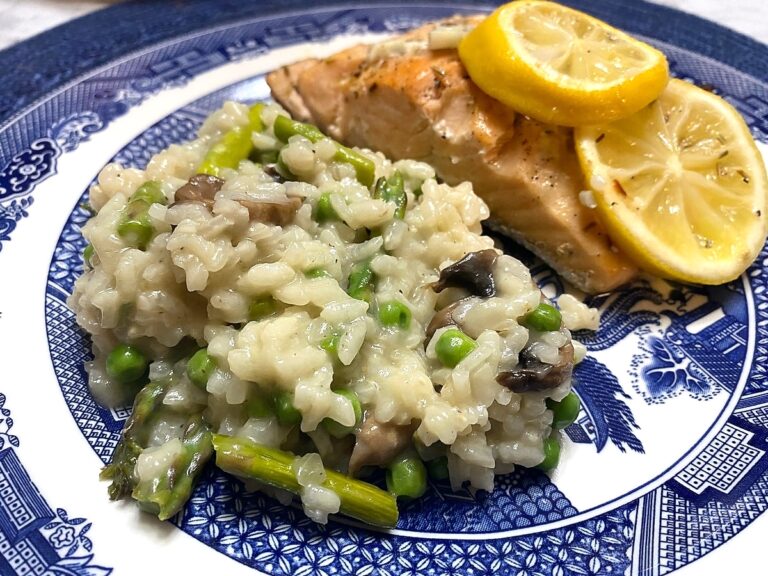This post contains affiliate links, which means I receive a commission if you make a purchase using these links. As a Walmart and King Arthur Baking affiliate, and an Amazon Associate, I earn from qualifying purchases.
A few years ago, my husband gave me a KitchenAid Pasta Machine, and I was so excited to use it. I studied lots of recipes both online and in books and came up with the following recipe for Homemade Pasta. It’s perfect for making your own homemade linguine, lasagna, ravioli, or even spaghetti.
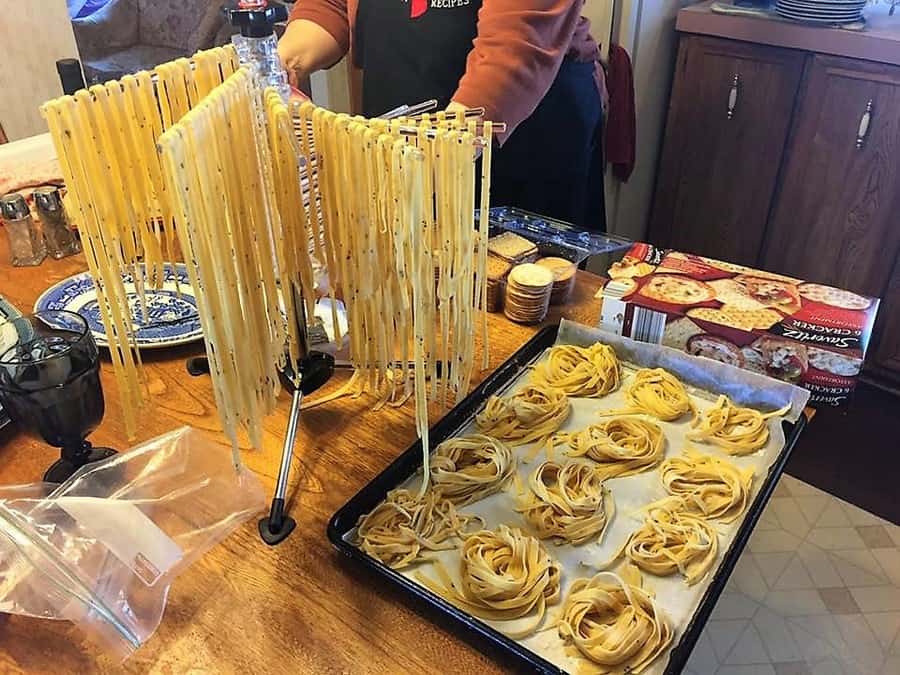
If you’ve never made homemade pasta, I encourage you to give it a try. It’s much more tender and flavorful than dried pasta that you purchase at the store. Plus, it doesn’t take very long to make or cook, especially once you have the hang of it.
Learning to Make Pasta
I have never been to Italy, nor have I had the pleasure of taking a pasta-making course. And I didn’t grow up with a grandmother to teach me her wonderful Italian recipes, simply because there is not a drop of Italian blood in me.
However, like many Americans, I am obsessed with making (and eating) Italian food. Fortunately, there are lots of books that teach the ins and outs of making pasta. I adore reading classic Italian cookbooks by Lidia Bastianich and Marcella Hazan, as well as specific pasta cookbooks like Making Artisan Pasta, or Mastering Pasta.
as an amazon associate, i earn from qualified purchases at no price increase for you.

Lidia’s Mastering the Art of Italian Cuisine
Buy Now → Buy Now →
Buy Now → 
Essentials of Classic Italian Cooking
Buy Now →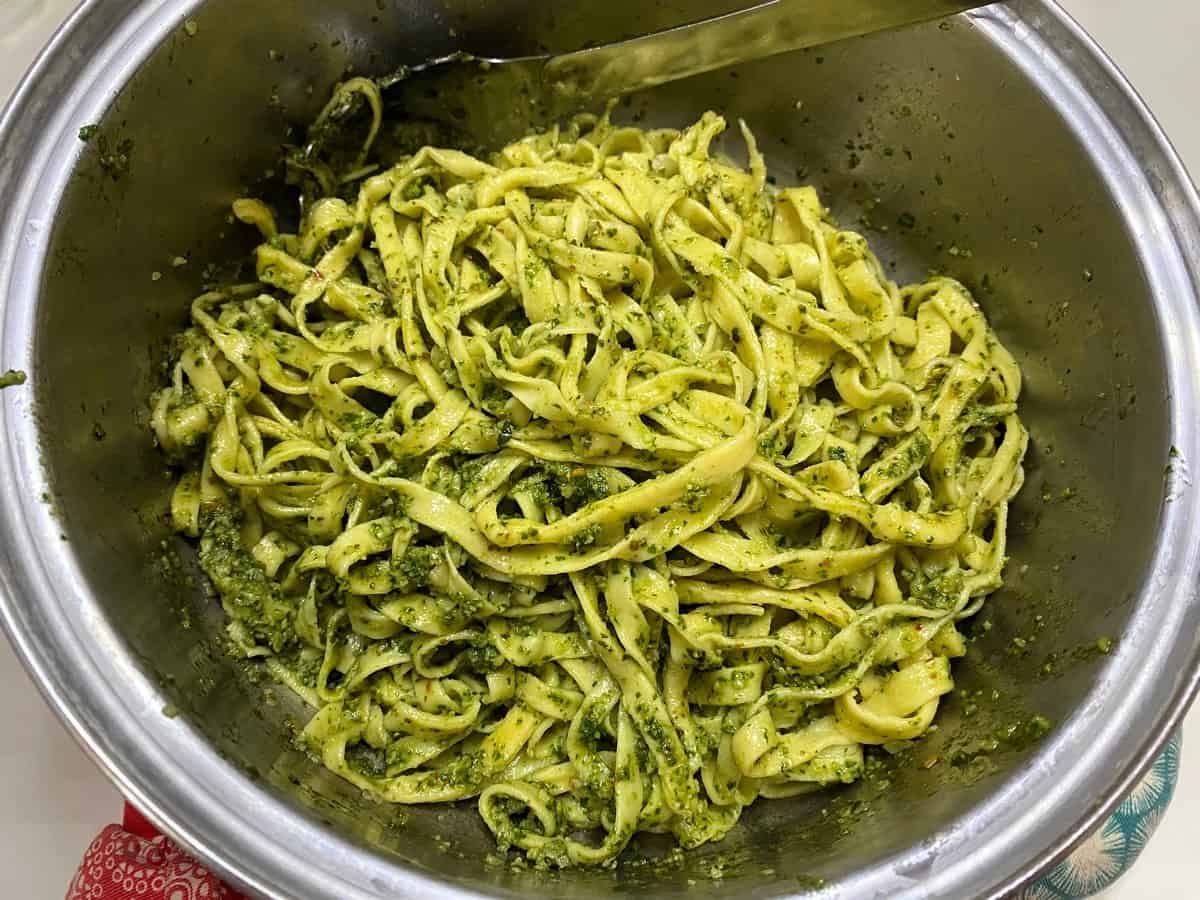
And there are even more pasta recipes online to experiment with that include flavored doughs (Spinach, Saffron, Beet, Tomato, Herb), to stuffed pastas such as Ravioli and Tortellini, or even shaped pasta like Penne, Ziti, Farfalle, or Orecchiette. Here are a few of my favorite sites on the web: The Pasta Project, Homemade Pasta by Spoon, Fork, Bacon, Homemade Pasta by Garden Betty, and Pasta Grannies.
Ingredients for Homemade Pasta
(As a Walmart and Amazon Affiliate, I earn from qualified purchases at the links below. See the full recipe at the bottom of this post.)
Buying Pasta Flour
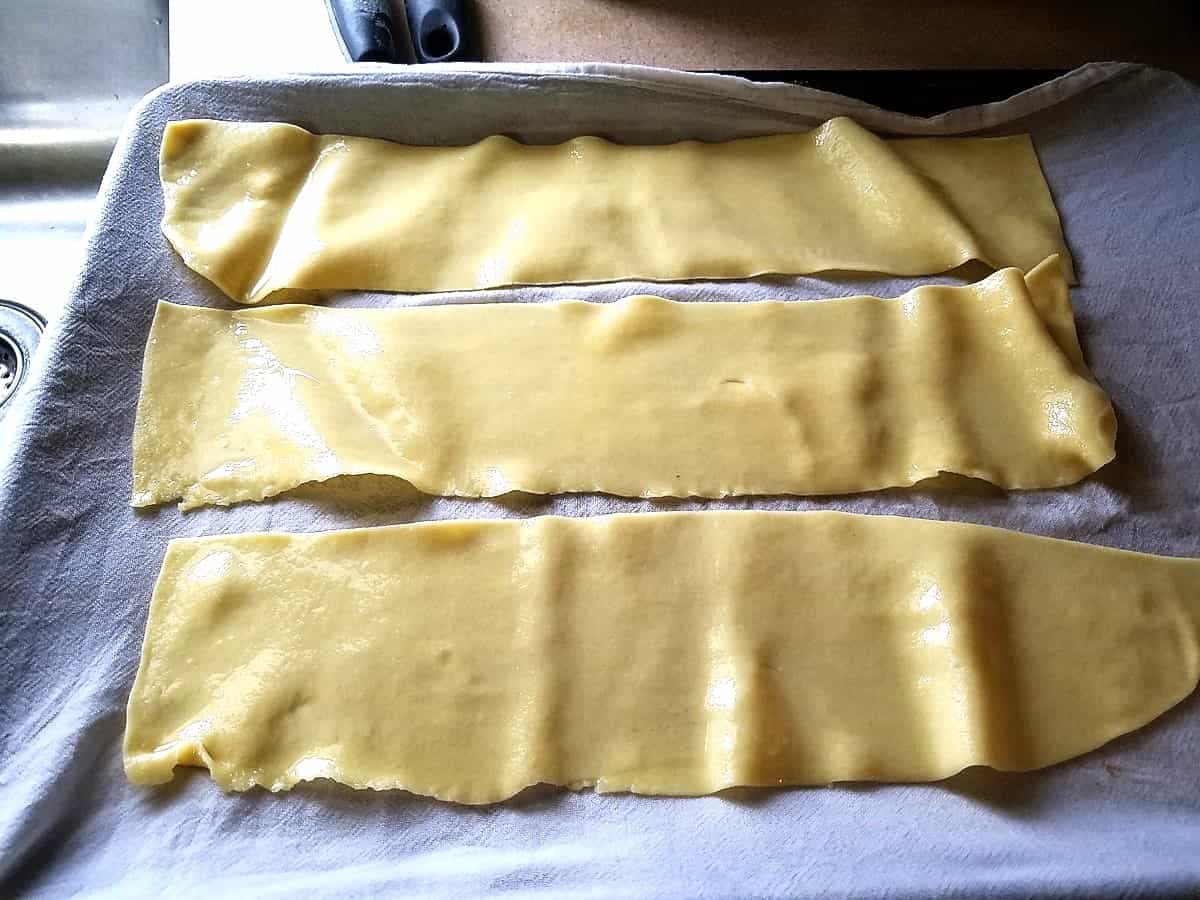
After reading many online reviews, I decided to split the flour using 1/2 Italian 00 and 1/2 Semolina–which is a high-protein durum wheat. The three brands I tried were Caputo Semola, Bob’s Red Mill Semolina, and King Arthur Semolina Flour.
Sometimes if I desire a softer dough, I will use 1 1/2 cups 00 flour and 1/2 cup Semolina, with everything else the same. I will do this when making Ravioli, Lasagna, and also Pappardelle.
During the years of Covid when certain flours were hard to come by, I made pasta with a mix of 00 flour and all-purpose. While it wasn’t my favorite, it certainly worked.
as an amazon associate, i earn from qualified purchases at no price increase for you.
 Buy Now →
Buy Now →  Buy Now →
Buy Now →  Buy Now →
Buy Now → Choosing a Pasta Maker
When it comes to making pasta, you basically have three choices: 1) roll and cut the pasta with hand tools; 2) use a gadget that fits on a mixer, such as the KitchenAid Pasta Attachment, or 3) make pasta with a hand crank machine, such as the Marcato Atlas 150 Pasta Machine.
as an amazon associate, i earn from qualified purchases at no price increase for you.
 Buy Now →
Buy Now → 
KitchenAid Pasta Roller and Cutter
Buy Now → Buy Now →
Buy Now → After much searching and reading reviews, I decided on the KitchenAid attachment as I wanted my hands free to work with the pasta. It’s more expensive (or at least it is now), but I love how it works and have not been disappointed in the seven years that I’ve owned mine.
Instructions for Making Pasta
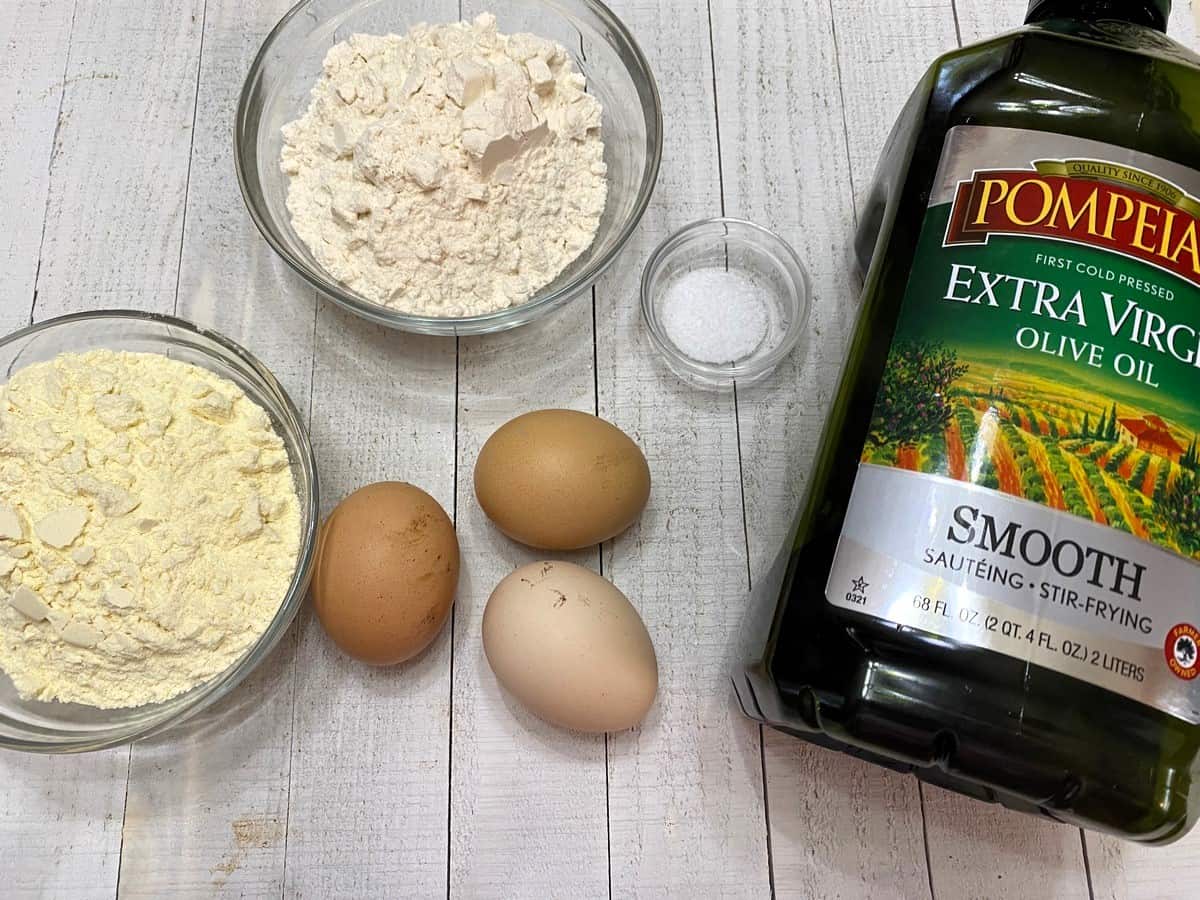
To begin, gather the ingredients for this recipe so that you have everything close at hand on the counter or table.
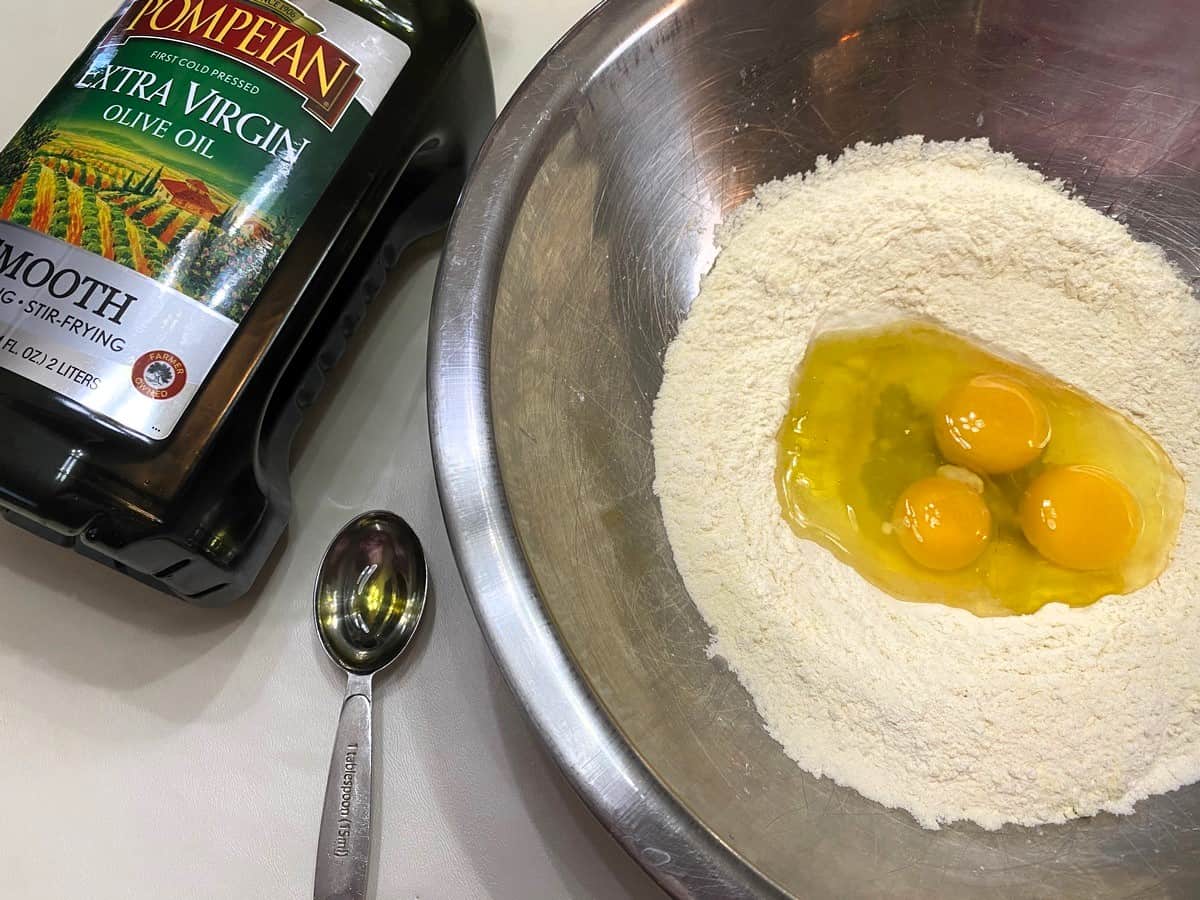
In a large stainless steel bowl, stir together the flours and salt. Create a well in the center and add the large eggs and olive oil.
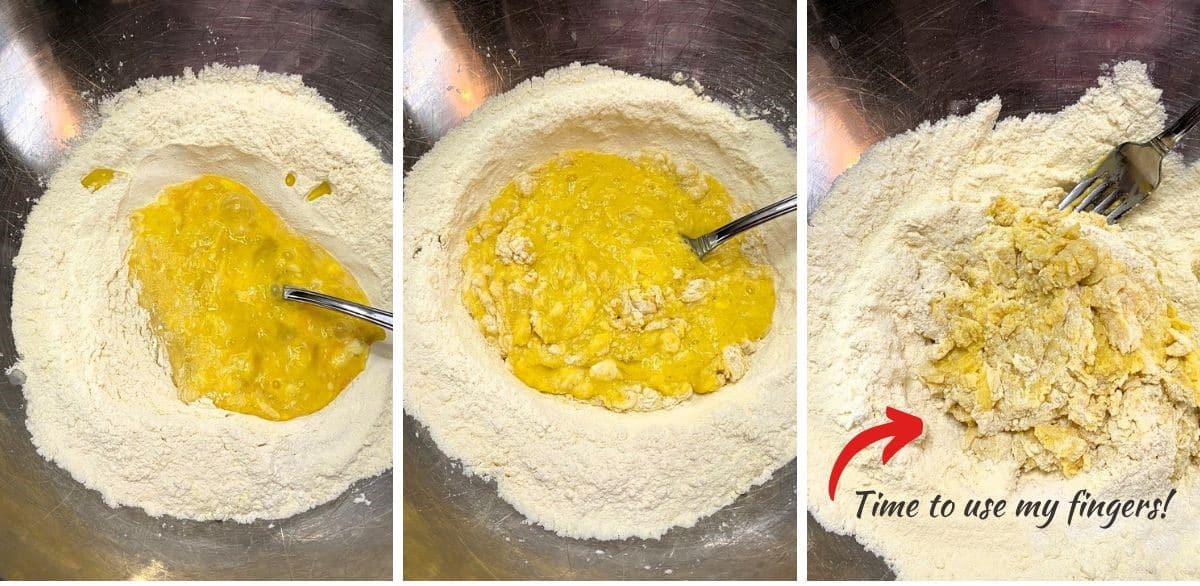
Gradually mix the egg mixture into the flour using a fork or your fingers, eventually bringing the ingredients together to form a firm dough. You may need to add a few drops of water if the dough feels too dry.
When making your dough, most online instructions show placing the flour on the counter and mixing the dough there. I like using a flat stainless steel bowl, which allows easier clean-up, and I still have plenty of control in bringing the dough together. I usually begin mixing with my fork, but always end with my fingers.
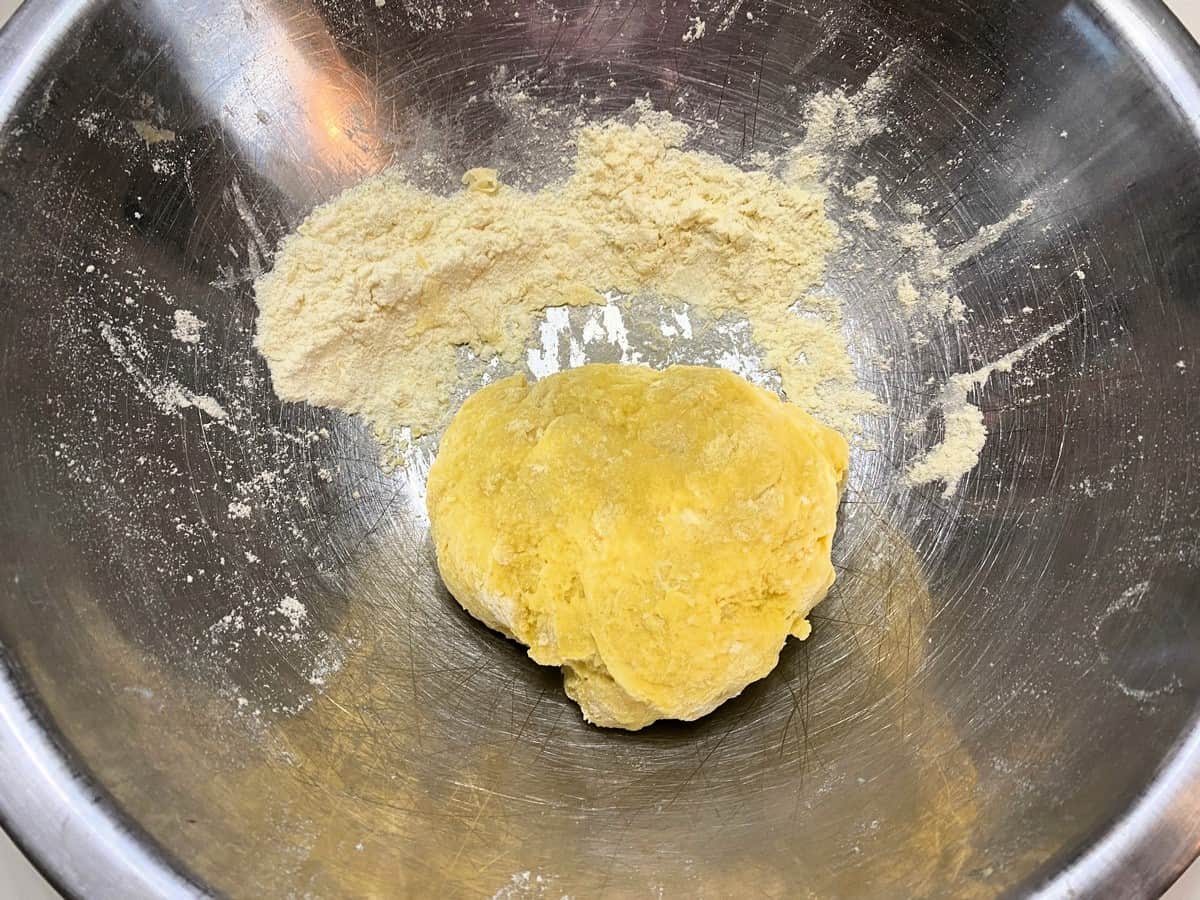
Knead the dough until it’s smooth and supple, 3-5 minutes. Try to refrain from adding extra flour when kneading as this will give your pasta a floury taste. On the opposite end of the spectrum, do not worry if you do not use all of the flour in the bowl. You (and your fingers) will learn to recognize when your dough is ready, just by how it feels.
Dribble a little olive oil over the dough and place in a plastic bag. Allow to rest for 30-40 minutes.
ROLLING THE PASTA

Divide the pasta in half, returning one portion to the bag until ready to use. Flatten the other piece of dough with a rolling pin to match the size of your pasta roller.
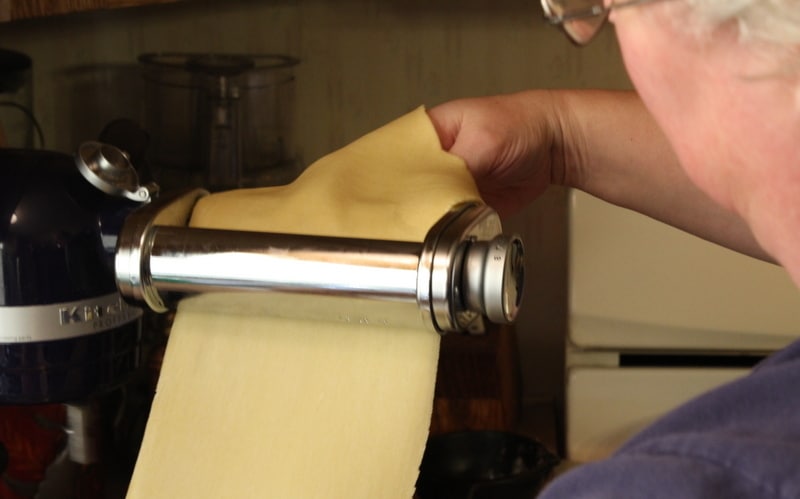
Feed the dough through the machine, using the first setting of your machine.
I use a KitchenAid Pasta Roller and my first setting is 2. I like having my hands free to handle the pasta.
Pass the pasta through once, and then fold it into thirds and pass it through again. After that, continue feeding the pasta sheet through the machine at each level (3, 4, 5…) until you reach the desired thickness.
| KITCHENAID PASTA ROLLING GUIDE | |
|---|---|
| 1 or 2 | Kneading and thinning dough |
| 3 | Thick “kluski”-type noodles |
| 4 | Egg noodles |
| 4 or 5 | Lasagna noodles, fettuccine, spaghetti, and ravioli |
| 6 or 7 | Tortellini, thin fettuccine, and linguini |
| 7 or 8 | Very thin “angel-hair”-type pasta/capellini or very fine linguine |
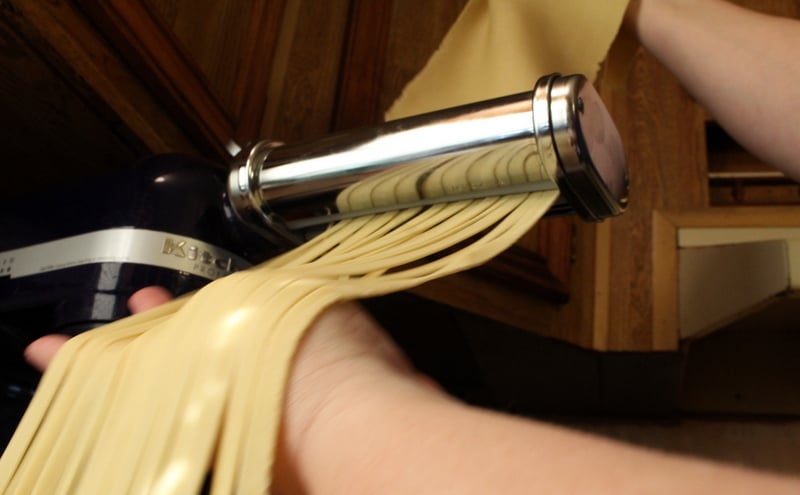
Once you have the pasta dough to the desired thickness, feed the sheet through the cutter attachment, catching the pasta as it comes out the other side.
COOKING THE PASTA
At this point, the pasta is ready to cook, or you may continue allowing it to dry. I like to dry my pasta for 2-3 hours, but it’s not necessary. If you plan to freeze or store the pasta in your pantry, allow it to dry for 24-48 hours before placing in a storage container or Zip-lock bag.
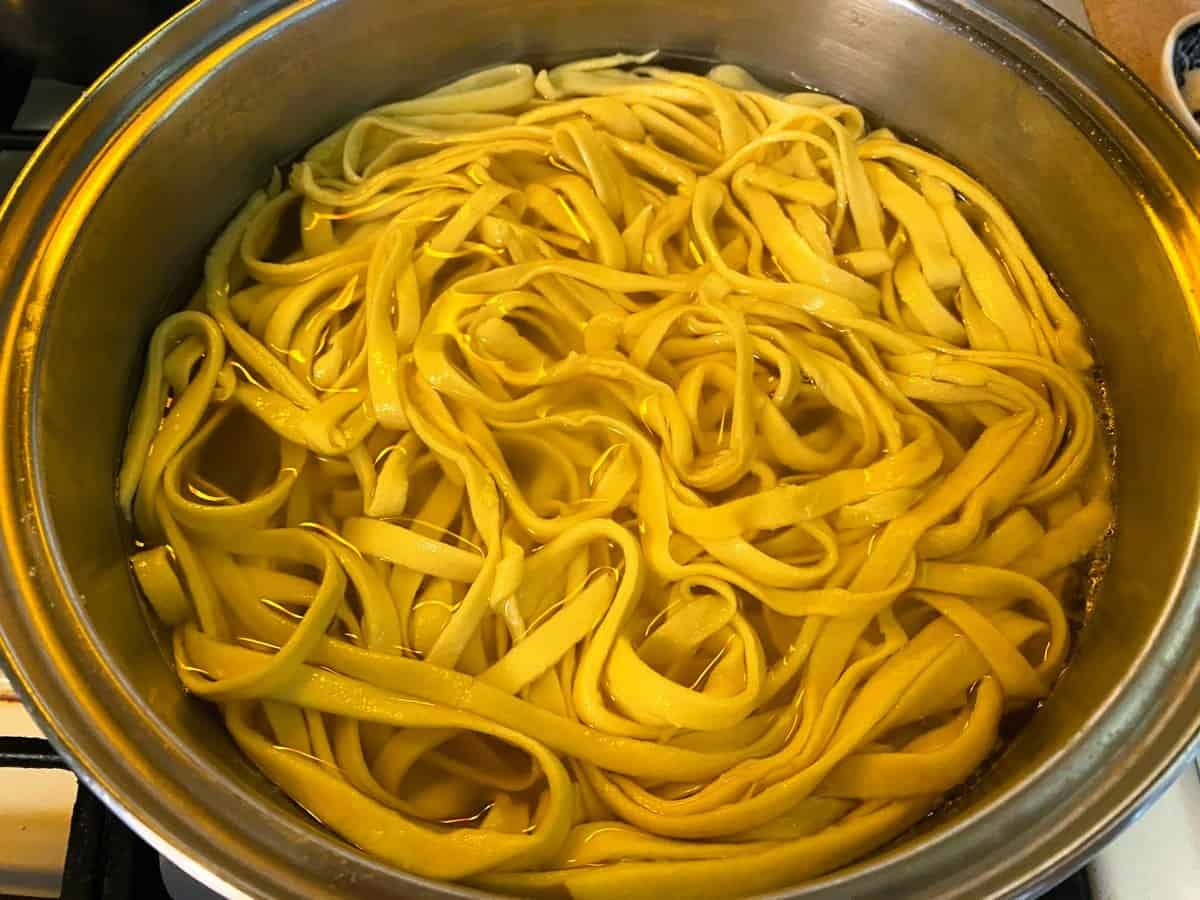
Cook the pasta in boiling salt water until al dente or firm to the bite 2-4 minutes, depending on the thickness of your pasta.
Please note that fresh homemade pasta doesn’t require as much cooking time as store bought pasta.
Stir the pasta immediately after you add it to the water and then once more while it cooks to prevent it from sticking.
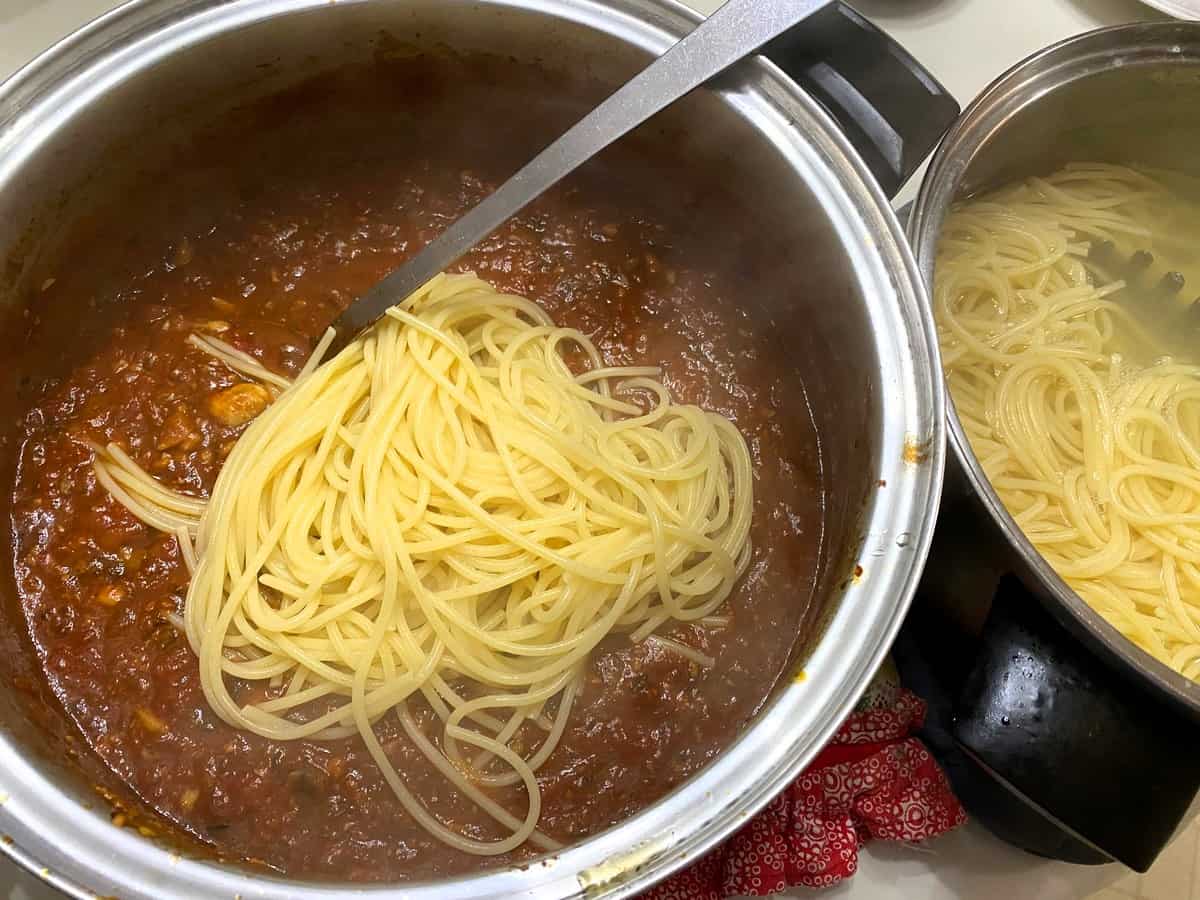
When I am making a sauce for the pasta such as a red sauce, an alfredo sauce, or even pesto, I will transfer the cooked pasta to the sauce and carefully stir it with a long spoon or pasta tongs until it’s coated with the sauce. Be sure to save at least a cup of your pasta water to use in the sauce if it needs thinning.
Pasta water also works as a great thickener for sauces, too, as it has lots or starch in it.
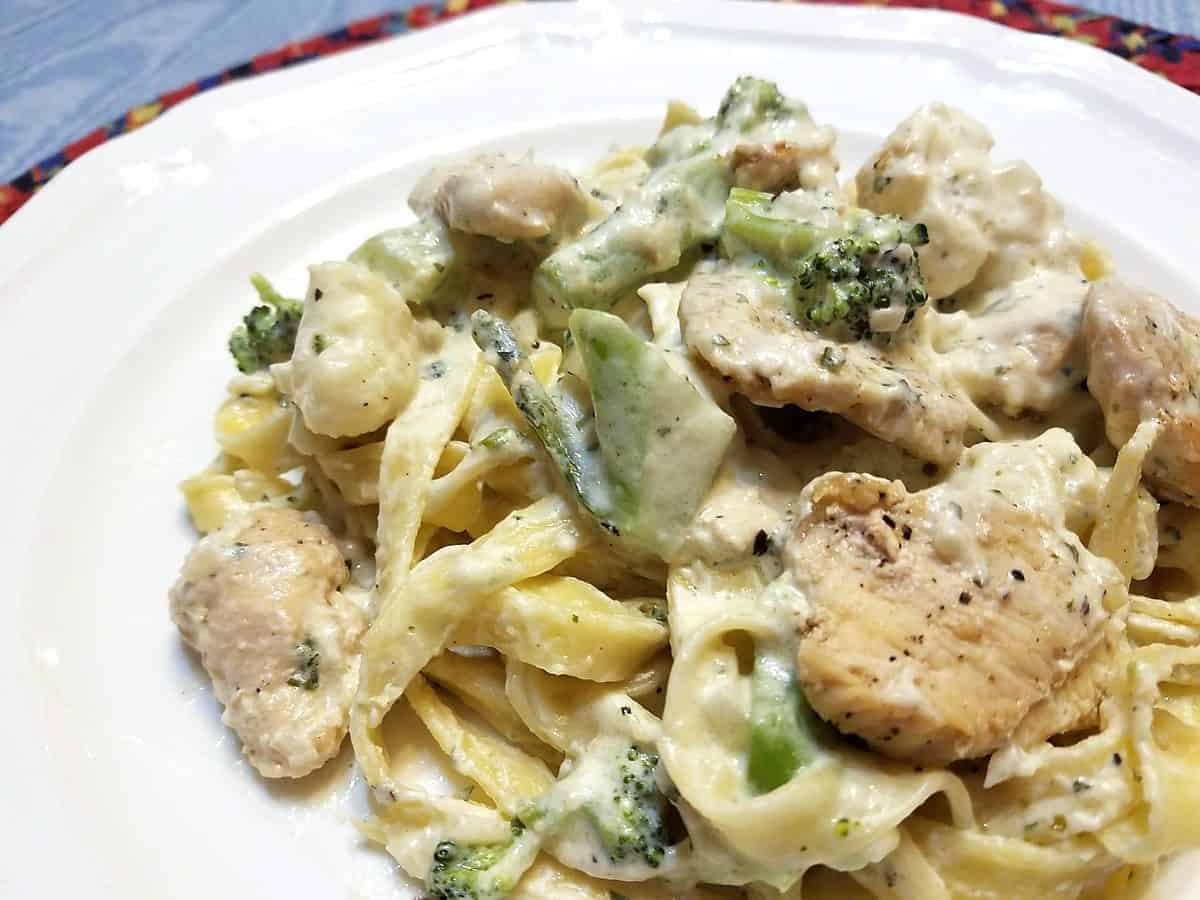
Serve the pasta while it is nice and hot with your favorite sauce–or even just a drizzle of olive oil or melted butter. This pasta recipe makes 1 pound of pasta, enough for 4-6 servings.
I hope you will enjoy making Homemade Pasta as much as I do. Our whole family loves it. And while it may seem a little daunting at first, once you’ve done it a time or two, you’ll be so very glad you did.
Browse Similar Categories
Homemade Pasta
(As an Amazon Associate, I earn from qualifying purchases.)
Ingredients
- 1 cup Italian 00 flour
- 1 cup Semolina flour
- 1/2 teaspoon kosher salt
- 3 large eggs
- 1 tablespoon Extra Virgin olive oil
- drops water (if necessary)
Instructions
- Gather the ingredients so you have everything close at hand on the counter or table.
Make the Pasta
- In a large stainless steel bowl, stir together the 00 flour, semolina flour, and kosher salt.
- Create a well in the center and add the large eggs and extra virgin olive oil. Gradually mix the egg mixture into the flour using a fork or your fingers, eventually bringing the ingredients together to form a firm dough. (You may need to add a few drops of water if the dough feels too dry.)
- Transfer the dough to a flat surface and knead the dough until it's smooth, 3-5 minutes. (Try to refrain from adding extra flour when kneading as this will give your pasta a floury taste.)
- Dribble a little olive oil over the dough and place in a plastic bag. Allow to rest for 30-40 minutes.
Roll and Cut the Pasta
- Divide the pasta in half, returning the extra dough to the bag until ready to use. Flatten one piece of dough with a rolling pin to match the size of your pasta roller.
- Feed the dough through the machine, using the first setting of your machine (I use a KitchenAid Pasta Roller and mine is 2). Pass the pasta through once, and then fold it into thirds and pass it through again.
- After that, continue feeding the pasta sheet through the machine at each level (3, 4, 5…) until you reach the desired thickness.
- Once you have the pasta dough to the desired thickness, feed the sheet through the cutter attachment, catching the pasta as it comes out the other side.
- Drape finished pasta on a drying rack or form into little nests on a floured surface to dry, if desired. Repeat with the other ball of dough.
- At this point, the pasta is ready to cook, or you may continue allowing it to dry. I like to dry my pasta for 2-3 hours, but it's not necessary. If you plan to freeze or store the pasta in your pantry, allow it to dry for 24-48 hours before placing in a storage container or Zip-lock bag.
Cook the Pasta
- Cook the pasta in boiling salted water until al dente or firm to the bite 2-4 minutes, depending on the thickness of your pasta. (Fresh homemade pasta doesn't require as much cooking time as store bought pasta.)
- Stir the pasta immediately after you add it to the water and then once more while it cooks to prevent it from sticking.
- Serve immediately with your favorite sauce–even just a drizzle of olive oil or melted butter. This recipe makes 4-6 servings.

